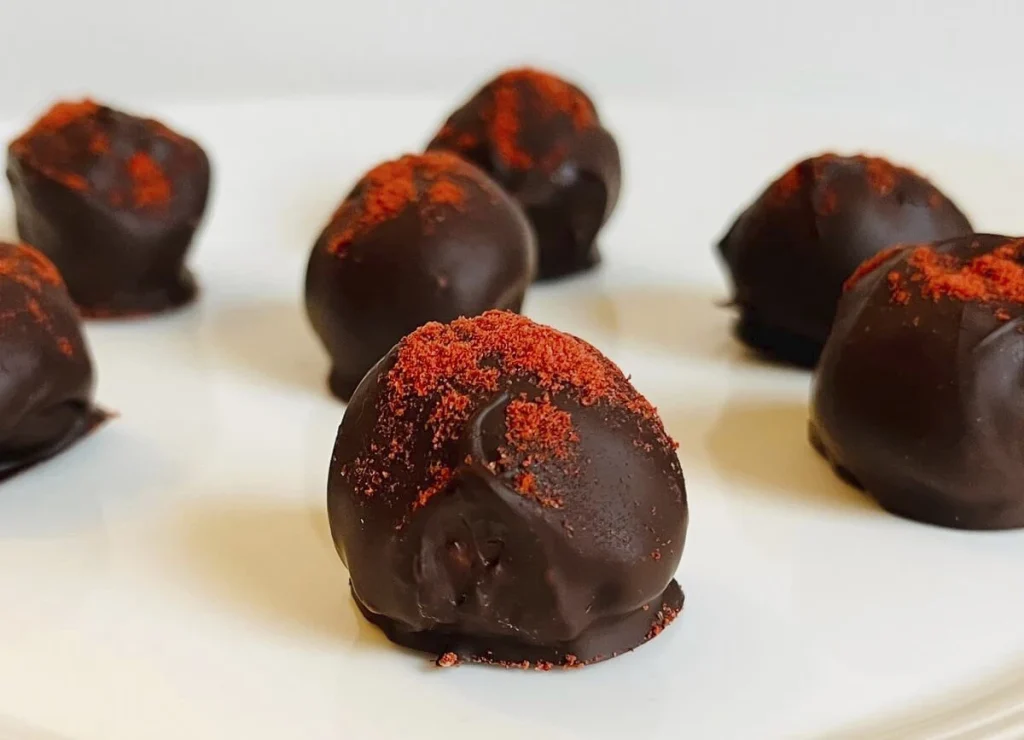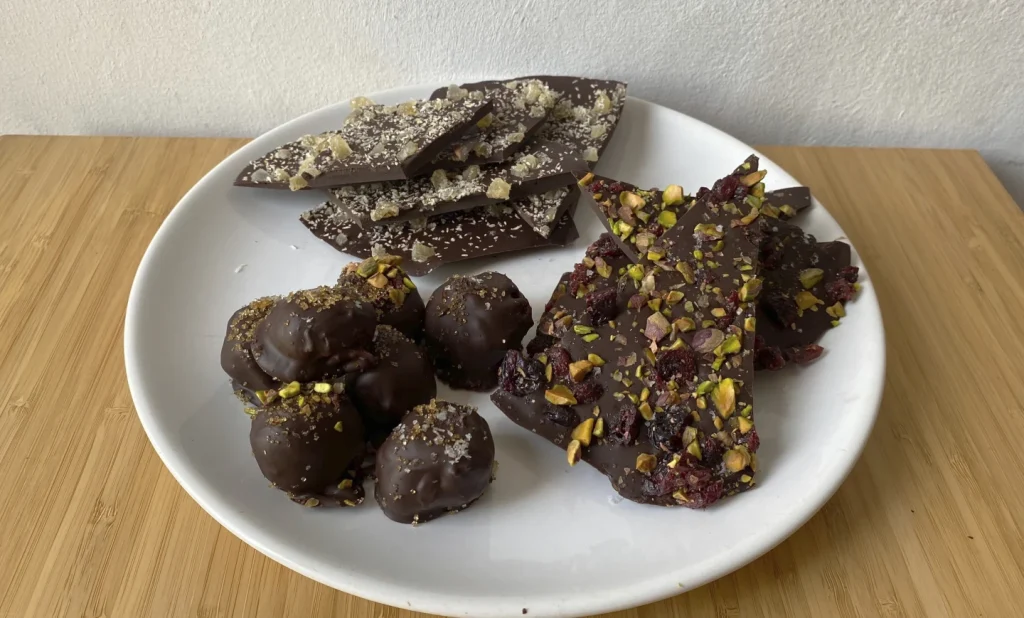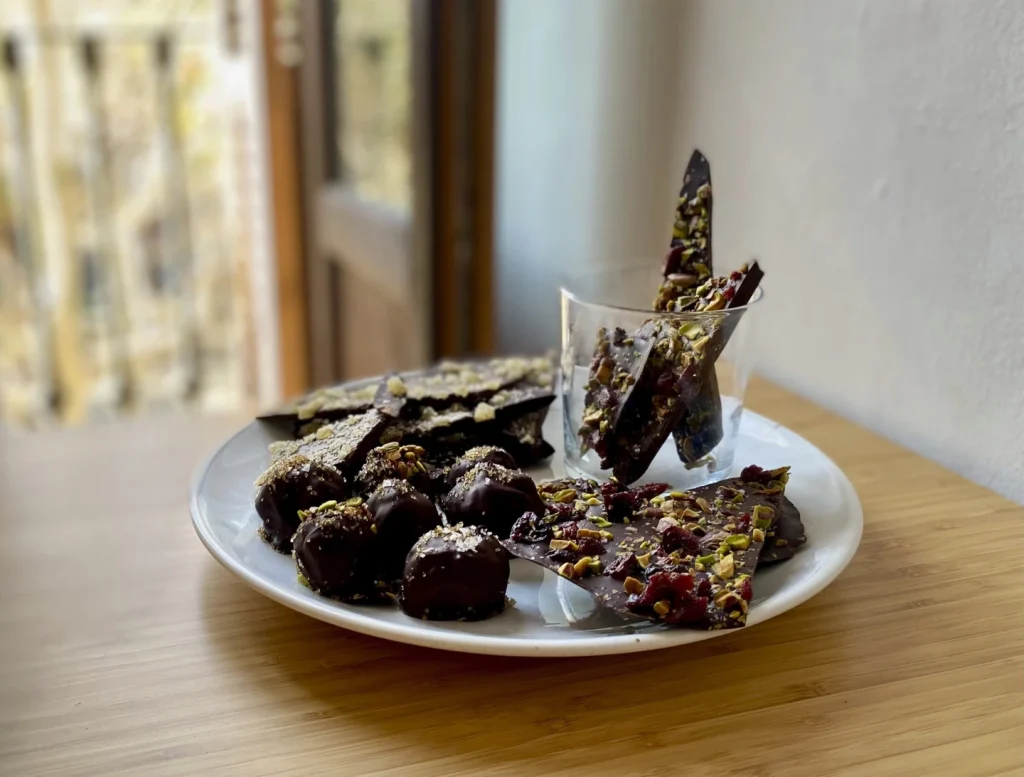The association between love and chocolate has been deeply ingrained in our culture since Cadbury popularized the fancy box of chocolates in the 19th century.
Over the years, clever marketing strategies by chocolate companies have emphasized the link between love and romance, often suggesting that a box of chocolates could win hearts and even a kiss.
As Sue Quinn, author of “The Little Chocolate Cookbook” and “Cocoa,” points out, the advertising of chocolate has long focused on its ability to evoke feelings of love and romance.
Despite this, the tradition of indulging in chocolate on Valentine’s Day remains as strong as ever. However, this year, why not elevate the gift-giving experience by making your own chocolates instead of purchasing them?
This personal touch can add a special and thoughtful element to the celebration of love and affection.
Many recipes are simple enough for novices to make without the need for any special equipment, and making them together can be a fun way to spend an evening.
For example, Quinn’s template for chocolate bark requires little more than melting the right kind of chocolate bar, spreading it onto a baking sheet, and adding a variety of toppings.
She recommends combining sweet-tart ingredients like dried cranberries or cherries with chopped nuts for contrasting flavor and texture, and always sprinkling the bark with flaky sea salt to bring out the chocolate’s nuanced flavor.
In addition to being a special gift from the heart, homemade chocolates are also free from preservatives, extra sugar, and artificial ingredients, according to Jennifer Bell, who blogs about cooking at A Sweet Alternative.
Her simple recipes for 20 homemade chocolates include three-ingredient truffles stuffed with strawberries, mango, or almond butter, with their creamy center enveloped in a crispy chocolate shell.
She also suggests trying her chocolate-covered coconut bars, blackberry clusters, and pears.
When it comes to gift-giving, there is often a desire to give something that feels personal and thoughtful, yet doesn’t require an excessive amount of time or effort.
This is where homemade treats come in, as they offer the perfect balance of a heartfelt gesture with relatively minimal equipment and effort required.
As Bell mentioned, all that’s needed is parchment paper or a silicone baking mat, making it accessible to even those with limited kitchen supplies. Additionally, with homemade recipes, there is no need to worry about professional techniques such as tempering chocolate.
This can often be a daunting task for those who are not experienced in confectionery, as it requires a precise and careful process to achieve the desired results.
With homemade treats, the focus can instead be on the joy of creating something from scratch and the satisfaction of sharing it with others.
Overall, homemade treats are a wonderful option for those looking to give a gift with a personal touch, without the need for extensive equipment or technical skills.
When it comes to the art of melting chocolate, it is imperative to handle the process with care and precision to avoid the chocolate becoming grainy due to the separation of cocoa butter from the solids under high heat.
Renowned chocolatier Bell advocates for the use of a microwave and a heatproof bowl, employing a method of melting chopped dark chocolate or chips in short bursts of high power, with intermittent stirring, until achieving a smooth consistency.
In contrast, Quinn, having experienced the unfortunate mishap of burning chocolate in the microwave, has devised her own technique of using a hair dryer in 30-second intervals, all the while stirring, to prevent overheating.

Alternatively, she opts for the traditional bain-marie method, utilizing a double boiler to gently melt the chocolate in a heatproof bowl placed over a saucepan of simmering water, ensuring that the bottom of the bowl does not come into direct contact with the water.
Furthermore, the selection of high-quality dark chocolate with a cacao content of approximately 70%, comprising only three to five ingredients, is emphasized as essential.
Notably, the prominence of sugar as the primary ingredient is discouraged, while the inclusion of soy lecithin, a common additive aimed at enhancing the pourability of melted chocolate, is deemed acceptable without compromising flavor.
The significance of utilizing superior chocolate in fundamental recipes is underscored, as even the simplest homemade chocolates are capable of conveying a distinct and cherished sentiment, as articulated by Quinn.
In her view, the act of gifting homemade chocolates holds a unique and endearing significance, far surpassing the gesture of acquiring them from a convenience store, thereby rendering the creator of such confections a truly noteworthy individual.
In Sue Quinn’s “The Little Chocolate Cookbook,” an exquisite recipe for homemade chocolate bark is presented, offering a delightful culinary endeavor.
With a total time investment of 50 minutes, of which 20 minutes are actively involved, this recipe beckons those with a penchant for both chocolate and craft.
The process begins with the meticulous arrangement of 600 grams (21 ounces) of dark chocolate on a parchment-lined, rimmed baking sheet, allowing the chocolate to gently cascade and envelop the surface.
As the chocolate still holds its supple form, a medley of toppings, ranging from pistachios to dried fruit, is artfully dispersed across its expanse.
The confection is then left to set, ultimately yielding a mosaic of delectable shards. Furthermore, Jennifer Bell’s “A Sweet Alternative” introduces an equally tantalizing creation in the form of homemade strawberry truffles.
This recipe, demanding a total time of 1 hour and 40 minutes, with 25 minutes actively spent, beckons the culinary enthusiast to embark on a journey of flavor and finesse.
Comprising 1 1/2 cups of chopped dark chocolate or chips, and 3/4 cup of chopped fresh or frozen strawberries, this recipe promises a symphony of taste.

The process involves a delicate interplay of heat and amalgamation, resulting in a luscious mixture that is then meticulously shaped into sumptuous truffles.
The final touch involves a delicate coat of melted chocolate and a sprinkle of freeze-dried strawberry powder, culminating in a treat that is as visually stunning as it is delectable.
Both of these recipes offer an opportunity to indulge in the art of chocolate making, inviting individuals to savor the fruits of their labor and share in the joy of culinary craftsmanship.
